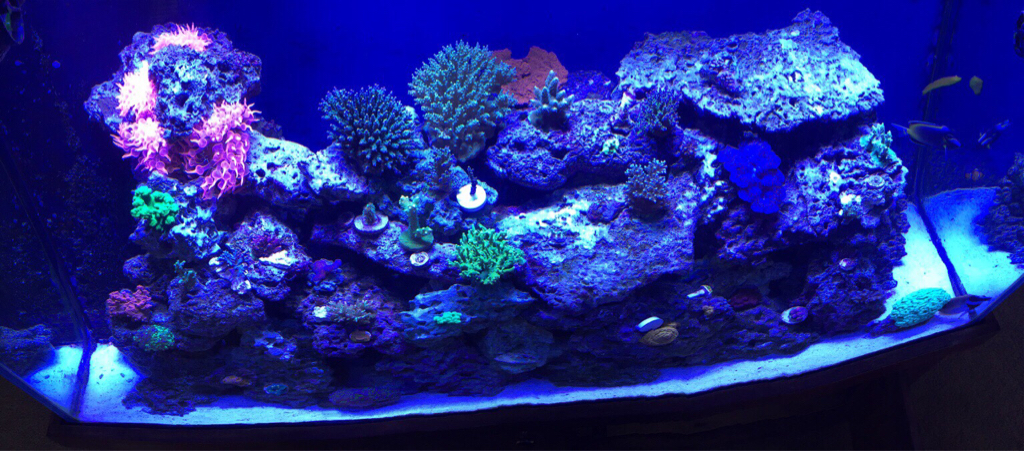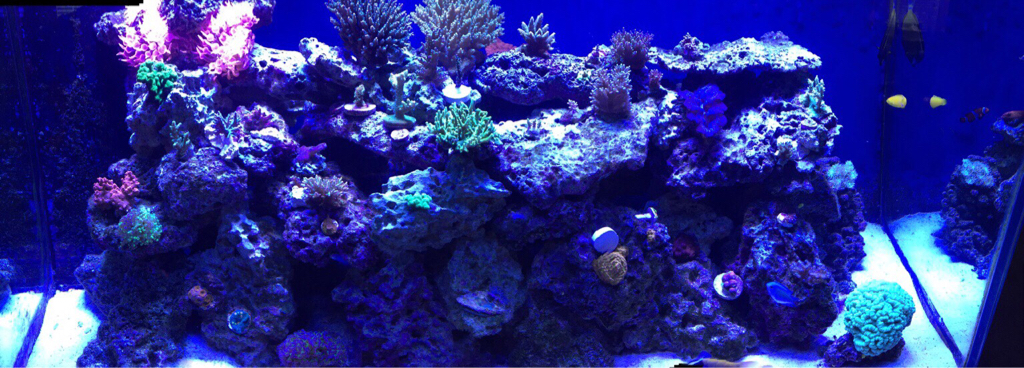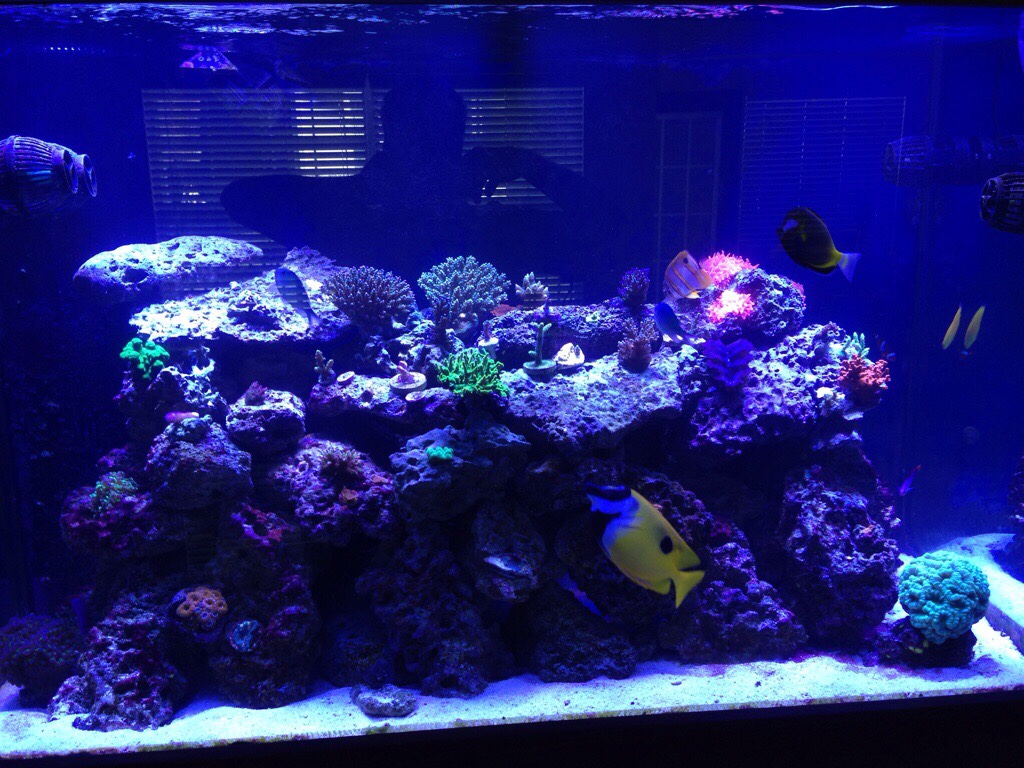Good topic Scott and one I've been immersed in a while now myself. And with incredible results. Been saying it for a little while now, but I really believe the secret is in the warm/neutral whites. I ran fixtures with cools and warms over the same system and the results were very clearly discernable as to what worked and what didn't.
Not going for the plug here but to illustrate my convictions, everything in this pack but the purple guy was grown 100% under LEDs. I could show you many many more. Color's there and so is growth. For me the question as to "do they?" has long been answered. It's now more a question of "for how long?" And don't get me wrong I'm still running plenty of HID's, but every time I need to buy another 16 T5's or a round of radiums I'm closer to switching over. I may be in the minority on this one, but I have yet to have any real trade offs in the switch to leds. In a lot of cases my sps look better. I would not have believed it if I didn't see it with my own eyes. It took me a while to really accept it, but I can't deny what in from of me. Since you specifically asked for some details,

I personally run no frills reefbreeder fixtures at 100% and high above the water. 20+ inches in some cases. Spread is good and heat is zero. These fixtures have warms only, not a single cool in there.
Aesthetically still inferior to the Radium in my opinion, I'll admit that I run halides over my own display. But for propagation, you cant hardly beat them if you ask me.
My advice Scott, would be to have someone build you a fixture (assuming you must have some LED's savoy friends) with plenty of warms and blues, and try them out over some sps in your main. I think you'll be pleasantly surprised at what you see.






